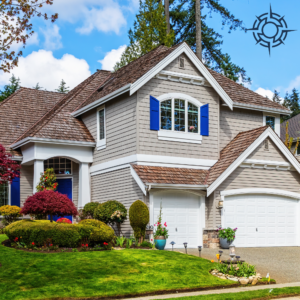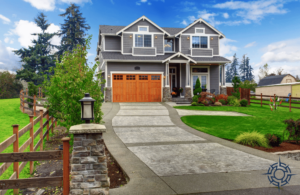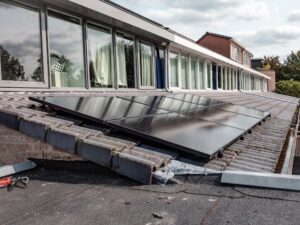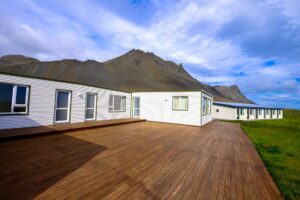Embracing nature’s design, many homeowners are turning to vines as a sustainable and visually appealing solution for their homes. According to the U.S. Department of Energy, a well-placed vine arrangement can slash a home’s energy consumption for cooling by as much as 25%. Beyond the ecological benefits, vibrant and well-maintained landscaping, including the incorporation of wall climbing vines like ivy or wisteria, can enhance property values by up to 12%. This makes the decision to let vines grace your home exteriors not just an environmentally conscious choice, but a potentially financially beneficial one as well. In this article, we’ll delve into the pros and cons of allowing vines to intertwine with your living space, helping you make an informed decision about this natural addition to your home architecture.
Benefits of Vines on Your Home
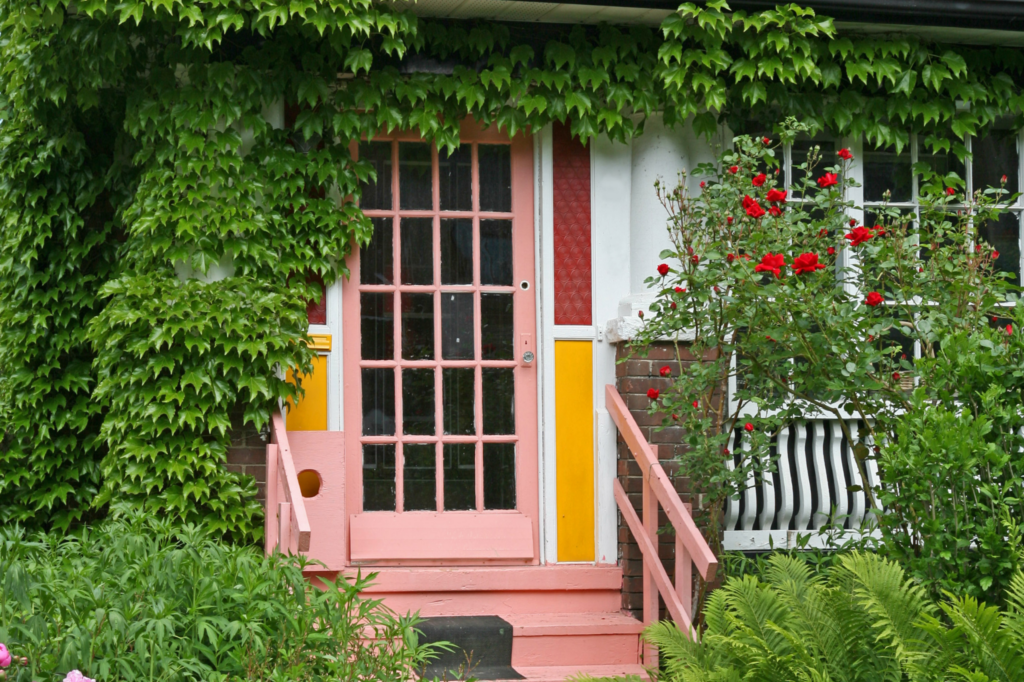
Enhanced Property Value/Resale Value
Vines can significantly boost the curb appeal of a home. Properties adorned with mature, well-maintained vines often stand out in the real estate market, attracting potential buyers with their charm and established feel. This visual appeal can translate into increased property values. When prospective buyers see a house enshrouded in beautiful natural elements, they often perceive the home as more desirable, potentially driving up its resale value. Though vines may throw off some buyers especially those looking for conventional homes or are used to a more sterile suburban aesthetic.
Impact on Energy Efficiency
The benefits of vine coverage extend beyond aesthetics into substantial energy savings. During the hot summer months, a vine-covered exterior acts as a natural insulator, reducing the amount of heat that penetrates walls and windows. This layer of greenery keeps interiors cooler, thereby lessening the reliance on air conditioning. The U.S. Department of Energy highlights that such landscaping adjustments can reduce a home’s cooling energy consumption by up to 25%, leading to lower utility bills and a more comfortable living environment.
Aesthetic Appeal
The lush, dense foliage of wall climbing vines like ivy or wisteria adds a touch of sophistication and a sense of tranquility to a home’s exterior. The greenery provides a living, breathing element that changes with the seasons, offering vibrant colors in spring and summer, and rich textures in autumn and winter. For many, the visual connection to nature and the dynamic beauty of these plants make the aesthetics of vine-covered homes particularly appealing and emotionally rewarding.
Challenges of Vines on Your Home
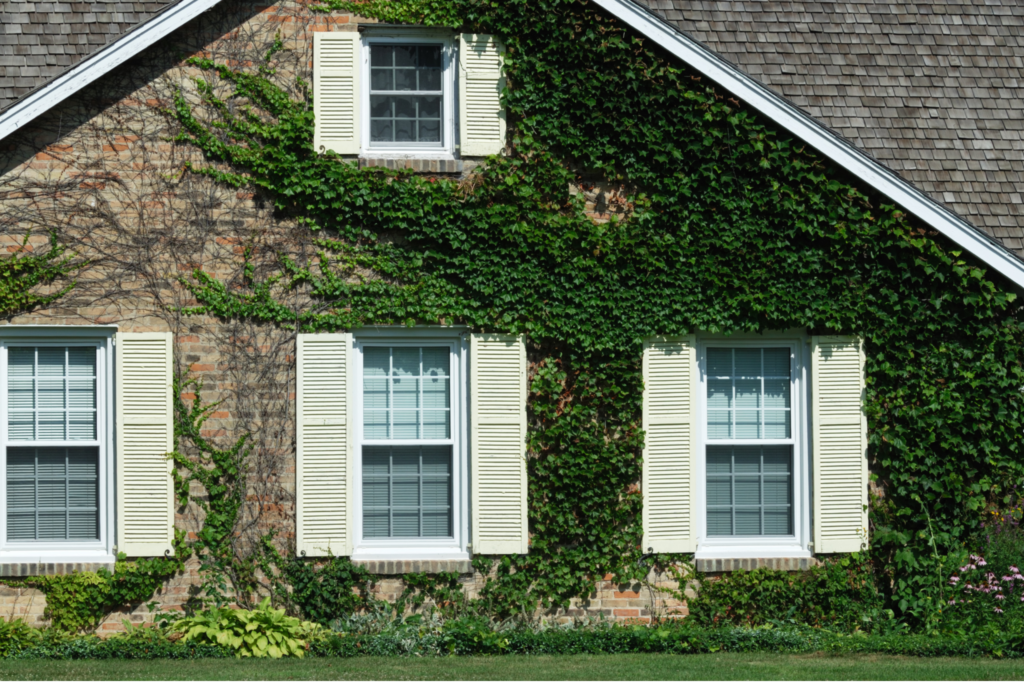
Maintenance of Landscaping
Maintaining vines on a home isn’t a set-it-and-forget-it task. Regular care, including pruning and health checks, is essential to keep the vines controlled and healthy. Overgrown vines can quickly become unruly, obscuring windows, gutters, and even roofs, which may lead to costly maintenance issues. Homeowners must commit to a routine that includes trimming the vines to prevent them from covering areas they shouldn’t, as well as checking for signs of disease or poor health that could affect not only the vines but also the underlying structures they adorn.
Potential Damage to Siding/Structures
Vines directly attached to siding can cause significant issues. Some species, like ivy, adhere to surfaces with tiny rootlets that can burrow into and eventually weaken the structural integrity of siding materials, including wood, brick, and stone. The moisture trapped by the dense foliage can exacerbate wear, leading to decay or mold growth beneath the vine. This trapped moisture is particularly problematic in climates with significant temperature swings, as it can freeze and expand, causing further damage to the exterior.
Pest Control
While vines can enhance a home’s beauty, they also create ideal habitats for pests such as rodents and insects. The dense leaves and stems provide shelter and nesting sites for mice and rats, while also attracting insects like ants and termites. These pests can cause additional damage as they nest within or feed on the structure of the house, potentially leading to expensive extermination and repair costs. Regular inspections are necessary to manage these risks and ensure that the vines do not become a liability.
Growing Methods
The method by which vines attach to a structure significantly influences the potential for damage. Vines that require structural support, such as trellises, generally pose less risk to building exteriors because they can be guided and controlled more effectively. This method allows for air circulation between the vine and the home’s surface, reducing moisture and minimizing damage risks. In contrast, vines that attach directly to siding tend to be more harmful due to their invasive growing habits. Choosing the right type of vine and support method is crucial to enjoying the benefits of vines without risking structural harm.
Navigating the challenges of integrating vines into your home’s exterior design requires thoughtful consideration of these factors to ensure that the aesthetic and environmental benefits do not come at the cost of your home’s integrity and safety.
Compass Exteriors: Your Partner in Home Exterior Maintenance
At Compass Exteriors, we understand the allure of beautifully draped vines on a home and the complexities they bring. As your trusted partner in home exterior maintenance, we specialize in maintaining, evaluating, and enhancing homes adorned with natural elements like vines. Our team of experts offers comprehensive services designed to manage the challenges vines may pose while preserving their aesthetic and environmental benefits.
Regular Inspections and Maintenance
Our services include detailed inspections to assess the health of both the vines and the structures they embellish. We provide routine maintenance tips and services, helping you keep the vines under control and thriving without damaging your home. From pruning to structural assessments, our goal is to ensure that your vine-covered exteriors remain both beautiful and safe.
Repair Services
Should damage occur, Compass Exteriors is equipped to repair any issues related to vine growth, including structural repairs, siding replacement, and moisture damage mitigation. We understand the specific challenges that vines can present, and we have the solutions to address them effectively.
Consultative Guidance
Deciding whether to keep, remove, or modify the way vines grow on your home can be complex. Our team offers expert advice on the best practices for vine management, including selecting the appropriate species and support structures, to ensure the long-term health and beauty of your home’s exterior.
Choosing Compass Exteriors means partnering with professionals who not only appreciate the beauty of nature-integrated designs but also possess the expertise to manage them responsibly. Whether you are considering introducing vines to your home or are seeking to better manage existing growth, we are here to ensure that your home remains a stunning, safe, and valuable asset. Reach out to us today to learn more about how we can help you balance the charm and challenges of living with vines.


